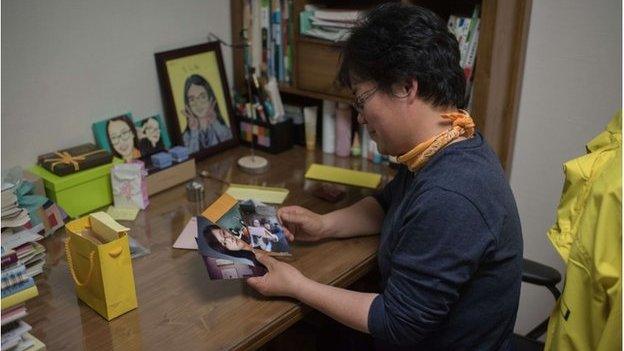Raising of sunken Sewol ferry under way two years later
- Published
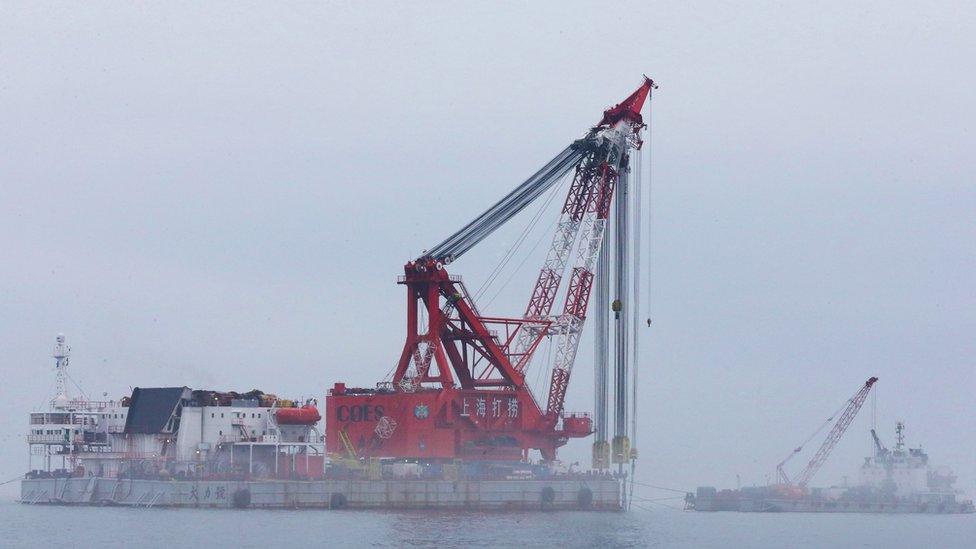
The project to raise the sunken South Korean ferry will cost an estimated $73 million (£47m)
An operation is under way to raise the Sewol ferry which capsized more than two years ago killing 304 people, mostly teenagers, in South Korea.
The raising of the Sewol, which sank on 16 April 2014, has been a central demand of the victims' families.
Many hope the bodies of the nine missing people will be recovered.
The disaster was one of the worst maritime disasters in South Korea in decades, and triggered widespread mourning.
The project, which will cost $73m (£47m), was announced last year by Seoul and is led by a Chinese consortium.
Challenging operation
Preparatory work was completed early on Sunday morning, with the lifting of the bow section- seen as the most challenging part of the operation- to be conducted over two days.
The 6,825-ton ferry lies more than 40 metres (130 feet) beneath the surface of the water, off the south-western island of Jindo.
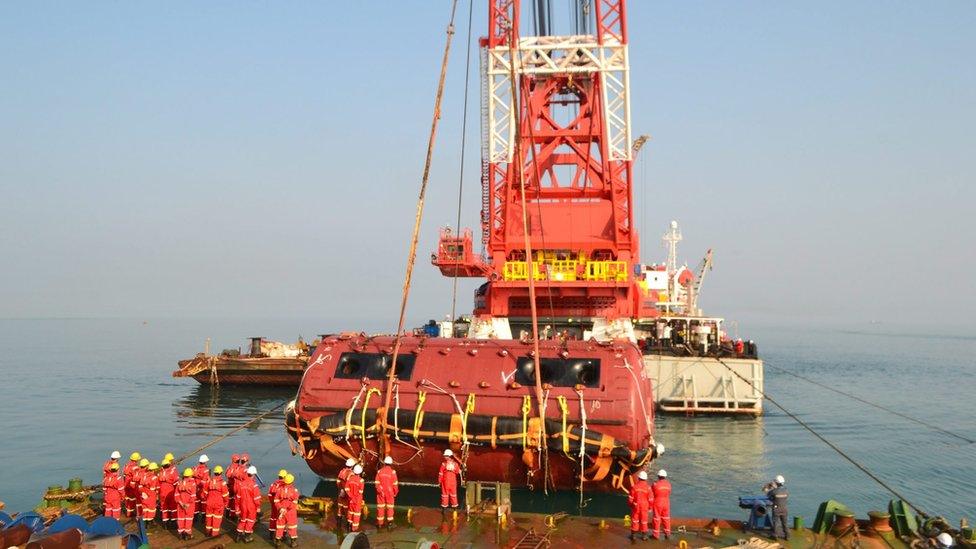
The incident was one of the worst maritime disasters in South Korea in decades
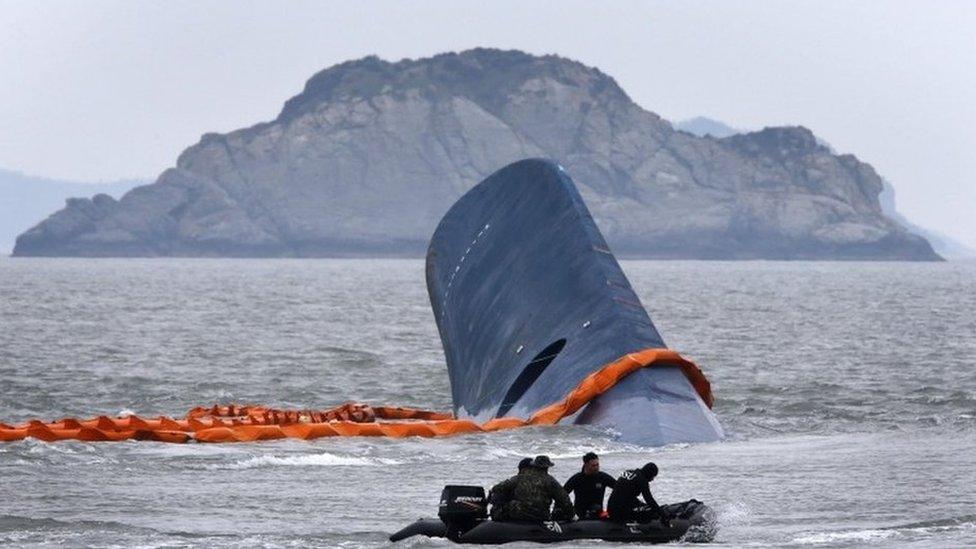
The families of the victims are closely watching the operation
Officials have said that the main hurdle will be lifting it from the seabed without it breaking up.
"The [lifting of the bow] operation takes up about 70% of the overall salvage project," Jung Seong-Wook, who is acting as a representative for the families of the victims, told AFP.
Once the bow is lifted 18 lifting beams will be placed underneath the ferry.
The Sewol may be raised by late July if the lifting operation goes smoothly, authorities have said.
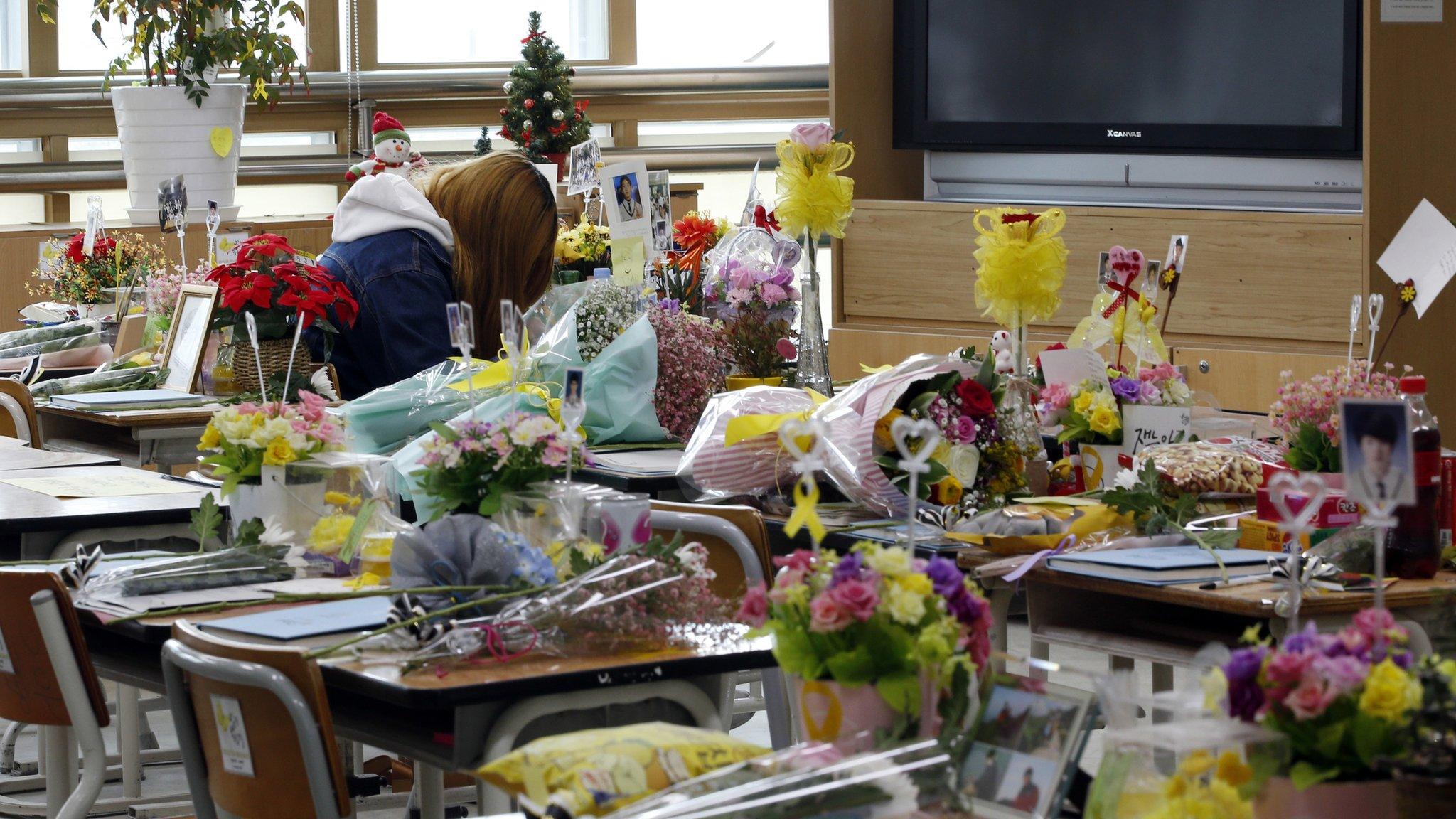
The majority of the victims were high school students who were on a school trip to the island of Jeju when the ferry sank
In April last year, South Korean President Park Geun-hye promised that the vessel would be raised at the earliest opportunity.
The disaster was blamed on a combination of illegal redesigns, the overloading of cargo, the inexperience of the crew member steering the vessel, and lax government regulations.
The Sewol was carrying 476 people when it sank. The passengers included 325 students aged between 16 and 17 who were on a school trip to the holiday island of Jeju.
- Published16 April 2015

- Published4 August 2015

- Published28 April 2015

- Published16 April 2015
